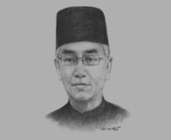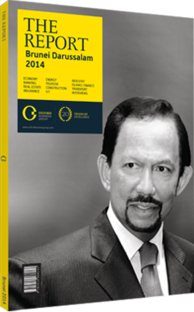OBG talks to Pengiran Yura Kesteria PSN Yusuf, Executive Chairman, Brunei Darussalam-Indonesia-Malaysia-Philippines East ASEAN Growth Area (BIMP-EAGA) Business Council

Interview: Pengiran Yura Kesteria PSN Yusuf
What has been the development focus of Brunei Darussalam’s three-year chairmanship of the BIMPEAGA Business Council (BEBC)?
PENGIRAN YURA KESTERIA PSN YUSUF: When BIMP-EAGA was established in 1994 as a sub-regional economic cooperation initiative, its main aim was to bring about socio-economic progress across the EAGA, narrowing gaps within the sub-region. Through a strong partnership involving regional governments and the private sector, EAGA member countries have endeavoured to facilitate growth in investment, trade and tourism, both to the sub-region from outside and within the sub-region itself. As it stands, the governing bodies within BIMPEAGA have established four central pillars of development. These pillars are connectivity, food production, tourism and the environment.
Of these pillars, connectivity is currently considered the most important and the area in which most of the existing development has taken place. The connectivity pillar touches upon a wide range of aspects that are crucial to the development of the sub-region. These include land, air and sea linkages; power and energy; Customs, immigration, quarantine and security issues; construction infrastructure; and information and communications technology infrastructure. Without the proper level of connectivity in place, the remaining pillars cannot be developed, so it is natural that most of the investment has gone toward this aspect. Although 2014 marks the 20th anniversary of BIMP-EAGA’s existence, the general consensus is that more impactful investments are still needed in order to lift the sub-region to the next level. Through the existence of a strong base of connectivity we hope that this can be achieved.
The BEBC’s focus during Brunei Darussalam’s chairmanship has centred on two areas: seeking investors for projects in the current BIMP-EAGA Implementation Blueprint, particularly regarding connectivity; and strengthening the BEBC, so it can be a catalyst in mobilising the private sector to be an engine of growth for the sub-region and the overall development of ASEAN.
What specific role does Brunei Darussalam play in the greater development of the sub-region?
PENGIRAN YURA: Brunei Darussalam plays a crucial role in facilitating the development of BIMP-EAGA as a whole due in part to the fact that it is the only sovereign nation within the economic sub-region. The remaining areas falling within the definition of BIMPEAGA include Kalimantan, Sulawesi, Maluku and Papua in Indonesia; Sabah, Sarawak and Labuan in Malaysia; and Mindanao and Palawan in the Philippines.
Part of the reason why development within BIMPEAGA has been slower than we would like is that those member regions within Indonesia, Malaysia and the Philippines have to report to their capitals, which are outside of BIMP-EAGA. In addition to that, the representatives and decision makers from those nations rarely come from these regions. For those reasons and more, Brunei Darussalam remains the most attractive starting point for investors looking to enter BIMP-EAGA.
Although the chairmanship of the BEBC rotates among the member nations, the possible future establishment of a BEBC headquarters permanently located in Brunei Darussalam would in some ways alleviate the existing issues associated with raising and attracting investment, such as the lack of structure in BEBC-member countries and the diffuse nature of the sub-region. Investors need to be able to clearly identify where to go and with whom to speak in order to facilitate their investments; and I believe the Sultanate could spearhead the sub-region in this regard.
From a sector-specific standpoint, Brunei Darussalam leads the sub-region in a number of key areas. It can serve as the financial centre for BIMP-EAGA, due to the fact that it is the most-developed and best-positioned country, with regards to global financial markets. The nation furthermore serves as the regional leader in developing ICT infrastructure, as exhibited by projects like the establishment of a fibre optic submarine cable system linking the entire region. These advantages prove Brunei Darussalam is well-equipped to lead.
You have reached the limit of premium articles you can view for free.
Choose from the options below to purchase print or digital editions of our Reports. You can also purchase a website subscription giving you unlimited access to all of our Reports online for 12 months.
If you have already purchased this Report or have a website subscription, please login to continue.

